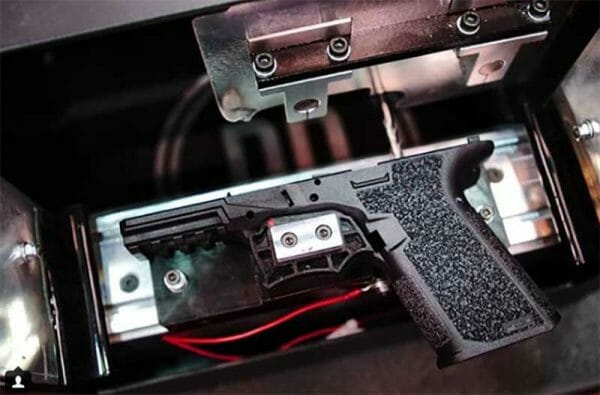
U.S.A. — During the Biden administration, the ATF has worked to vastly expand the definition of what a “frame or receiver” of a firearm is. On June 30, 2023, Texas District Judge Reed O’Conner vacated the ATF “Final Rule” on frames and receivers. From the order p. 3:
This case presents the question of whether the federal government may lawfully regulate partially manufactured firearm components, related firearm products, and other tools and materials in keeping with the Gun Control Act of 1968. Because the Court concludes that the government cannot regulate those items without violating federal law, the Court holds that the government’s recently enacted Final Rule, Definition of “Frame or Receiver” and Identification of Firearms, 87 Fed. Reg. 24,652 (codified at 27 C.F.R. pts. 447, 478, and 479), is unlawful agency action taken in excess of the ATF’s statutory jurisdiction. On this basis, the Court vacates the Final Rule.
The order does not accept the argument that the ATF can change the definition of a firearm without congressional approval. The order shows Congress could have used the language the ATF now prefers, but Congress did not. From the order p. 27:
As this Court has previously discussed, the definition of “firearm” in the Gun Control Act does not cover all firearm parts. It covers specifically “the frame or receiver of any such weapon” that Congress defined as a firearm. 18 U.S.C. §921(a)(3)(B). And that which maybe come or may be converted to a functional receiver is not itself a receiver. Congress could have included firearm parts that “may readily be converted” to frames or receivers, as it did with “weapons” that “may readily be converted” to fire a projectile. Id. § 921(a)(3)(A), (a)(4)(B). But it omitted that language when talking about frames and receivers.
Judge O’Conner elaborates on what Congress did not do. He writes the ATF may not overrule Congress. From P. 28 of the order:
Congress excluded other adjectives that ATF adds to its definition. Specifically, the Final Rule covers “disassembled” and “nonfunctional”frames and receivers. 27 C.F.R. §478.12(c). Congress’s definition does not. Again, compare the language in Congress’s primary definition of “firearm” to its secondary definition covering frames and receivers. The primary definition of “firearm” includes any “weapon” that “is designed to” fire a projectile. 18 U.S.C. §921(a)(3)(A). That language covers disassembled, nonfunctional, and antique firearms because they are “designed” to fire projectiles even if they are practically unable to do so. But Congress wanted to exclude antiques, so it explicitly said the “term does not include an antique firearm,” once again demonstrating awareness of the scope of the language it chose. Id.§921(a)(3). In contrast, Congress did not choose to cover firearm parts that are “designed” to be frames or receivers—that is, incomplete, nonfunctional frames or receivers. “That omission is telling,” particularly when Congress used the more expansive terminology in the same definition. Collins, 141 S. Ct. at 1782.In sum, ATF’s new definition of “frame or receiver” in 27 C.F.R. §478.12(c) is facially unlawful given its conflict with the ordinary meaning of those terms as read within their immediate statutory context. Sturgeon, 577 U.S. at 438 (cleaned up).
Judge O’Conner uses basic logic. Ayn Rand would approve. A cannot be both A and not A. From P. 29:
Logic dictates that a part cannot be both not yet a receiver and receiver at the same time. Defendants’ reliance on that logical contradiction is fatal to their argument.
Judge O’Conner goes on to show that “weapons parts kits are not weapons”. From P 35:
In sum, there is a legal distinction between a weapon parts kit, which may be an aggregation of partially manufactured parts not subject to the agency’s regulatory authority, and a “weapon” which “may readily be completed [or] assembled . . . to expel a projectile.” 18 U.S.C. §921(a)(3)(A). Defendants contend that drawing such a distinction will produce the absurd result whereby a person lawfully prohibited from possessing a firearm can obtain the necessary components and, given advances in technology, self-manufacture a firearm with relative ease and efficiency.86 Even if it is true that such an interpretation creates loopholes that as a policy matter should be avoided, it not the role of the judiciary to correct them. That is up to Congress. And until Congress enacts a different statute, the Court is bound to enforce the law as written.
The ATF contends it is absurd to consider a prohibited person could not legally possess a firearm, but could possess the means to create one in a few hours. However, this has been true for decades, not just in the last few years.
It is more absurd to assert a kit, and a finished weapon are the same.
In the United States, the philosophy in law is: “That which is not forbidden is allowed.”
In authoritarian polities, the philosophy is: “That which is not allowed is forbidden.”
The gulf between the two philosophies is large.
About Dean Weingarten:
Dean Weingarten has been a peace officer, a military officer, was on the University of Wisconsin Pistol Team for four years, and was first certified to teach firearms safety in 1973. He taught the Arizona concealed carry course for fifteen years until the goal of Constitutional Carry was attained. He has degrees in meteorology and mining engineering, and retired from the Department of Defense after a 30 year career in Army Research, Development, Testing, and Evaluation.

from https://ift.tt/ixz4KfQ
via IFTTT

No comments:
Post a Comment